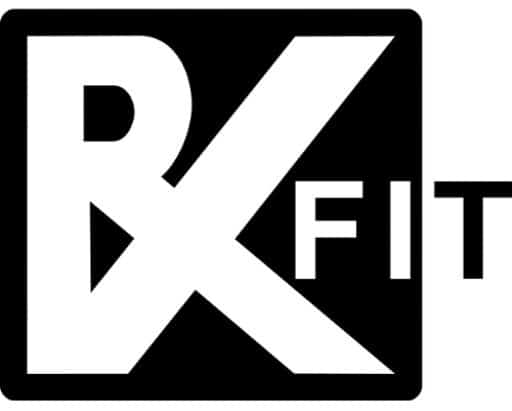The gym is a place of physical activity, sweat-soaked determination, and the occasional misplaced protein shake. But beyond the clang of weights lies the art of exercise. Going to the gym is not just about showing up and throwing some metal around. You have to find the perfect rhythm of frequency and duration that unlocks your fitness potential.
Our dedicated team at RxFit, are certified fitness professionals devoted to improving your mobility, cardio and strength training, and flexibility through mastering gym frequency and session length. We strive to seamlessly integrate fitness into your busy schedule.
The Importance of Consistent Gym Attendance
Regular gym attendance is crucial for fitness success as each session contributes to your goals. Skipping workouts creates gaps, diminishes the overall impact, and extends the time required to witness tangible results. Muscle memory and a heightened metabolic rate show the importance of consistency. While regular exercise fosters mental fortitude, extending beyond the gym to life. Dedication to regular attendance is the key to long-term fitness goals.
Balancing Frequency and Duration for Optimal Results
Finding the sweet spot between gym frequency and session length is as personal as your favorite workout playlist. Experts recommend that cardio exercise should be done five times a week while most strength training sessions should only be done twice a week. With that in mind, here’s what RxFit suggests you bear in mind when you’re wondering how often should you go to the gym to create a perfect routine.
Frequency can be broken down into three categories:
- Beginner: 2-3 sessions per week, focusing on proper form and building a base.
- Intermediate: 3-4 sessions per week, introducing more challenging exercises and increasing intensity.
- Advanced: 4-5 sessions per week, incorporating advanced training techniques and pushing your limits.
Duration can also be broken down into three categories:
- Short and sweet: 30-45 minutes of high-intensity interval training (HIIT) can be incredibly effective, especially for busy schedules.
- The golden hour: 45-60 minutes is the prime time for most workouts, allowing you to hit all major muscle groups without overtraining.
- Going long: 60+ minutes can be beneficial for experienced athletes or those focusing on endurance training. However, listen to your body and avoid overexertion.
Understanding Individual Goals
When it comes to exercise, one size doesn’t fit all. Our goals, fitness levels, and lifestyles are as diverse as people. So, to truly unlock our potential, we need to move beyond generic plans and embrace customization. This is where understanding individual goals matter.
Tailoring Frequency to Fitness Objectives
Our gym frequency shouldn’t be a random number pulled from a hat. Gym sessions should be tailored to specific goals. For muscle building, you should aim for 3-4 sessions per week, focusing on major muscle groups with ample rest. Fat loss on the other hand benefits from a mix of 2-3 high-intensity and moderate-intensity sessions each week.
Cardio endurance requires consistent 30-45 minute sessions at moderate intensity. while stress management involves short bursts of activity like 20-minute yoga.
Duration Variation Based on Desired Outcomes
Just like frequency, the length of each session shouldn’t be a fixed quantity. For strength and power, you should aim for 30-45-minute intense sessions with heavy weights and explosive movements. Muscle mass and definition on the other hand benefit from 45-60 minute workouts, which blend compound and isolation exercises with controlled movements.
Cardio fitness, however, requires 60-90 minute sessions at a sustained pace. You should prioritize cardiovascular exercise and overall well-being with 20-30-minute sessions of enjoyable activities like dancing or brisk walks.
Frequency Guidelines
When it comes to hitting the gym, the question of frequency often crops up: “How often should I be there?” The truth is that it varies with each person and is affected by different factors including your fitness goals, experience level, and lifestyle.
Daily Workouts: Pros and Cons
Here is a list of the pros of daily workout frequency:
- Faster progress: For some, daily workouts can accelerate muscle growth, fat loss, and endurance gains, especially for beginners.
- Boosts metabolism: Regular exercise keeps your metabolic engine humming, burning more calories throughout the day.
- Improved mood and energy: Exercise releases endorphins, and natural mood elevators, promoting a positive outlook and combating fatigue.
- Increased discipline and routine: Daily gym sessions can become a valuable habit, building discipline and consistency in other areas of life.
Here is a list of the cons of daily workout frequency:
- Overtraining risk: Pushing your body too hard without adequate rest can lead to injuries, burnout, and even decreased performance.
- Muscle needs recovery: Muscles need time to repair and rebuild after strenuous workouts. Daily sessions might not allow sufficient recovery.
- Time commitment: Squeezing in daily workouts can be challenging, especially with busy schedules and other commitments.
- Lack of variety: Repeating the same routine every day can lead to boredom and decreased motivation.
The Sweet Spot: Ideal Weekly Attendance
Finding the ideal number of gym sessions five days a week depends on your individual goals and fitness level. Your fitness level can be classified as three things: beginner, intermediate, or advanced.
- Beginners: Aim for 2-3 sessions per week, focusing on proper form and building a foundation. Listen to your body and take rest days when needed.
- Intermediate: 3-4 sessions per week are ideal, allowing you to introduce more challenging exercises and increase intensity. Prioritize progressive overload and proper recovery.
- Advanced: 4-5 sessions per week can be beneficial for experienced athletes or those focusing on specific training techniques. Be mindful of overtraining and incorporate active recovery days.
Duration Decoded
When it comes to calculating the right length of time to spend in the gym, balance is key. Just like choosing the right weight or number of reps, figuring out the perfect workout duration is important.
Short vs. Extended Sessions: Impact on Fitness
Both short and long sessions have their virtues. They are however more or less effective based on the goals you’re trying to achieve.
Short sessions are ideal for persons with busy schedules. These sessions help to boost the metabolism and are perfect for high-intensity interval training (HIIT). short sessions are also great for beginners who are trying to build a habit. On the downside, the amount of time is not conducive for muscle building, or burning a lot of calories especially if the goal is to lose weight.
On the other hand, extended sessions provide more time for compound exercises and muscle building. It also allows for a higher calorie burn which is beneficial for healthy weight loss, endurance training, and cardiovascular health. The downside of longer training sessions is that they require more time and have an increased risk of overtraining if not planned properly. These types of sessions might not be suitable for beginners or those with limited mobility.
The Goldilocks Zone: Finding Your Perfect Duration
As with porridge, the key to a perfect workout lies in finding the “just right” duration. Here’s a peek into the Goldilocks zone of time based on your body weight and goals:
- Muscle Building: Aim for 45-60 minutes per session to build muscle mass and maximize muscle growth, focusing on compound exercises with ample rest between sets. Remember, quality over quantity is key!
- Fat Loss: Combine short HIIT bursts (20-30 minutes) with longer moderate-intensity workouts (45-60 minutes) throughout the week. Keep your heart rate up to lose weight and burn fat!
- Cardio Endurance: Embrace longer sessions (60-90 minutes) at a sustained pace to build stamina and improve lung capacity. Run, swim, cycle, or dance your way to a stronger heart!
- Overall Wellbeing: Short and sweet (20-30 minutes) is the mantra here. Choose activities you enjoy, like yoga, brisk walks, or light sports, to boost your mood and energy levels.
RxFit 3 tiers of fitness plans to choose from. Personal training sessions focus on fitness, nutrition, and accountability. Semi-Personal training provides the perks of personal training with all the fun of a gym membership and hanging out with a buddy. Finally our “Masterclass in Transformation” is a 12-week program that helps you achieve long-term results with a strategic approach.
Balancing Act: Frequency vs. Duration
Sometimes you may want to hit the gym often enough to see progress, while on the other hand you don’t want to overdo it and risk burnout. This is why it’s important to find that sweet spot that’s a healthy balance in-between.
Finding Harmony for Sustainable Gym Habits
The key to a harmonious balance lies in understanding that frequency and duration are not independent variables. But how often should you go to the gym? Frequency and duration are like two sides of the same fitness coin, and adjusting one often impacts the other.
For beginners, 2-3 sessions per week (30-45 minutes) can build a foundation while losing weight as you progress to longer sessions. Building muscle can happen in 3-4 sessions (60 minutes) with compound exercises and lifting weights. Fat loss, however, requires a mix of short HIIT (20-30 minutes) and longer moderate-intensity workouts (45-60 minutes).
It’s important to adjust session lengths based on lifestyle. For example, a busy schedule favors shorter, more frequent sessions. Listen to your body for recovery and prioritize rest when needed. Progress happens both inside and outside the gym.
Adjusting Frequency Based on Session Length
Let’s dive deeper into the practical adjustments you can make to your frequency and session lengths:
- Short Workouts (20-30 minutes): Aim for 3-4 sessions per week. Focus on high-intensity exercises like HIIT, sprinting, or circuit training. This maximizes calorie burn and keeps your metabolism revving while losing weight.
- Moderate Workouts (30-45 minutes): 3-5 sessions per week is a good target. Include a mix of strength training with compound exercises and cardio for overall fitness improvement.
- Longer Workouts (60-90 minutes): 2-3 sessions per week might be sufficient, especially for advanced athletes or those focusing on endurance and strength training. Ensure proper pacing and prioritize lean muscle mass over multiple sessions to gain muscle.
Not sure how to get started? Wondering how often should you go to the gym? RxFit offers personalized fitness services designed for individuals like yourself, aiming to enhance not only physical strength but also mental clarity. Our tailored protocol is crafted for enduring transformation, providing you with the energy necessary to extract greater fulfillment from your life.
Personalizing Your Gym Routine
How often should you go to the gym? Stepping into the gym is like stepping into a world of infinite possibilities. But navigating this world, crafting a routine, and easing into an exercise program that’s uniquely yours can feel overwhelming.
Factors Influencing Individual Needs
Before designing your routine, consider these key factors that influence your individual needs:
- Fitness Level: Are you a gym newbie, a seasoned athlete, or somewhere in between? Your experience level determines the intensity, complexity, and volume of your workouts.
- Goals: Do you dream of sculpted muscles, enhanced endurance, to lose weight, or simply a healthier lifestyle? How often should you go to the gym to achieve these goals? Your goals dictate the focus of your routine, whether it’s strength training, cardio, or a balanced mix.
- Lifestyle: How much free time do you have? Do you prefer early morning or evening workouts? In-person or virtual training? Your schedule and preferences play a crucial role in designing a sustainable routine that fits your life.
- Recovery Needs: Listen to your body! Everyone has different recovery requirements. Prioritize rest days and adjust your intensity based on your fatigue levels.
Tailoring Frequency and Duration to Your Lifestyle
Once you understand your unique needs, let’s tailor your frequency and duration:
- Busy Bee: Short and sweet is your mantra! Aim for 3-4 sessions per week, focusing on high-intensity interval training (HIIT) or circuit training for maximum calorie burn in minimal time.
- Balanced Lifestyle: 3-5 sessions per week with moderate-intensity workouts (30-45 minutes) are ideal. Combine strength training, cardio, and flexibility exercises for an overall fitness boost.
- Fitness Enthusiast: You can handle 4-5 sessions per week, exploring longer workouts (60-90 minutes) focused on specific goals like endurance training or muscle building. Remember to prioritize proper pacing and recovery.
Working with an RxFit personal trainer can help remove the pressure of navigating a fitness and weight training routine all by yourself. We’re committed to aiding the people of Austin to embrace fitness, even amidst their busy lifestyles. At RxFit, you’ll find that you can wholeheartedly dedicate yourself to your work without compromising your health.
Connect With An RxFit Personal Trainer Today!
The Overtraining Dilemma
Pushing your limits is crucial for progress, but exceeding them can lead to overtraining. Here are some warning signs of overtraining to watch out for:
- Performance plateaus: Progress stalls or regresses despite consistent effort.
- Increased fatigue: Persistent lack of energy and sluggishness, even with adequate sleep.
- Persistent muscle soreness: Lingering and worsening soreness, despite proper rest.
- Mood swings: Heightened irritability, frustration, or anxiety.
- Loss of appetite or sleep disturbances: Difficulty eating or sleeping, indicating an overburdened system.
How to Adjust Frequency and Duration to Avoid Overtraining
Prevention is always better than cure. Here are some ways to adjust your frequency and duration to keep overtraining at bay:
- Listen to your body: Prioritize rest and recovery; don’t push through pain or fatigue.
- Progressive overload: Gradually increase intensity or volume for sustained progress.
- Schedule rest days: Take at least 1-2 rest days per week based on intensity and experience.
- Prioritize sleep: Aim for 7-8 hours nightly for optimal recovery.
- Fuel your body: Maintain a balanced diet with sufficient protein, carbs, and healthy fats.
- Cross-train: Incorporate diverse activities to prevent overuse injuries.
- Seek professional guidance: Consult a certified trainer for a personalized, effective program.
Consistency is Key
Why is consistency so important when you’re deciding “How often should you go to the gym?” Here are some observations by RxFit:
- Non-linear progress: Muscle growth is gradual, with consistent workouts creating cumulative improvements over time.
- Metabolic boost: Regular exercise sustains a heightened metabolism, aiding fat loss and energy expenditure so that you can lose weight.
- Habituation and discipline: Consistent exercise builds mental resilience and transforms workouts into a habitual part of your lifestyle.
- Mental and emotional well-being: Consistent workouts elevate mood, release endorphins, and contribute to overall mental and emotional health.
Strategies for Maintaining a Consistent Gym Routine
But how do you translate this theoretical knowledge into practical action? Here are some strategies for maintaining a consistent gym routine:
- Set SMART goals: Specific, Measurable, Achievable, Relevant, and Time-bound goals provide a clear roadmap for your fitness journey. Consistency thrives on knowing where you’re headed.
- Find your “why”: What ignites your passion for fitness? Is it improved health, a stronger physique, and building muscle, or simply feeling good? Connecting your workouts to a deeper purpose fuels motivation and consistency.
- Variety is the spice of life: Don’t get stuck in a rut! Mix up your routine with different exercises, classes, and activities. Keep your workouts fresh and engaging to avoid boredom.
- Find a workout buddy: Partnering up adds a layer of accountability and makes workouts more fun. Find a friend with similar goals and cheer each other on.
- Track your progress: Seeing your improvements, however small, is a powerful motivator. Keep a workout journal or use fitness apps to track your progress and celebrate milestones.
- Reward yourself: Don’t just grind! Celebrate your consistency with small rewards, like a post-workout smoothie or a new workout outfit.
- Make it convenient: Schedule your workouts like you would any important appointment. Pack your gym bag the night before, choose a gym close to home or work, and remove any logistical hurdles.
- Listen to your body: Don’t push yourself through pain or exhaustion. Take rest days when needed and prioritize proper recovery. Remember, consistency thrives on sustainability.
Summary
Our exploration of gym frequency and duration has unveiled the importance of a personalized workout routine and being consistent. Remember, your fitness journey is a marathon, not a sprint. Embrace the joy of movement, prioritize consistency, and listen to your body. With each workout, you’ll reveal a stronger, healthier you.
Are you still a bit overwhelmed trying to figure out how often should you go to the gym? Take a breath, take a step back, and let RxFit help you create a balanced workout routine, that’s right in that Goldilocks zone, through our certified fitness providers.


